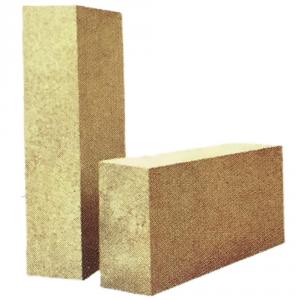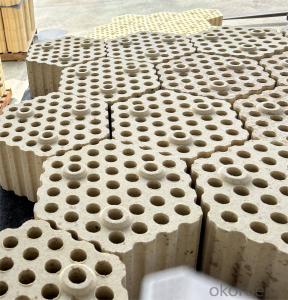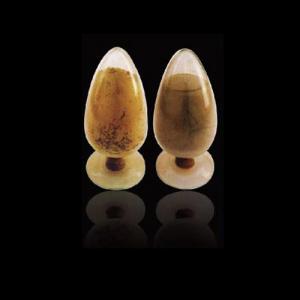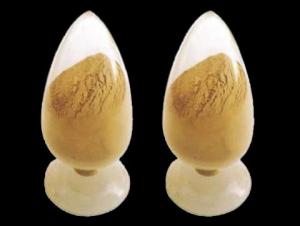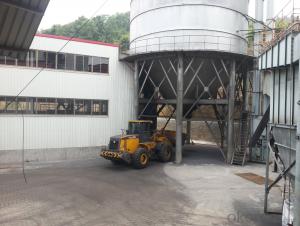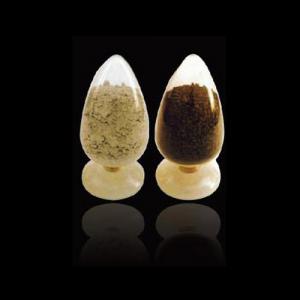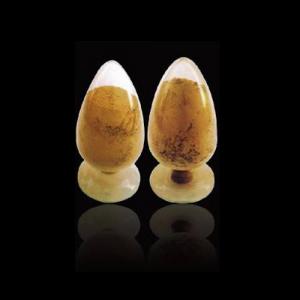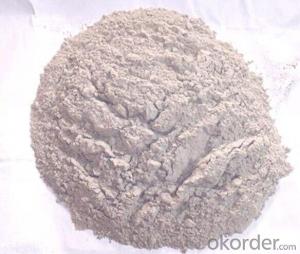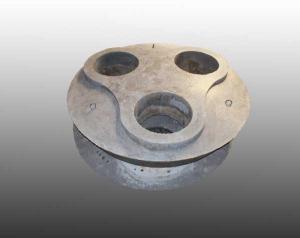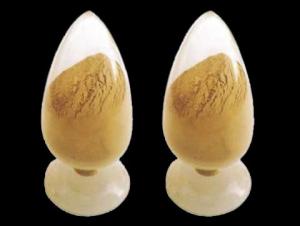Fireclay Brick for Blast Furnace Hot Blast Furnace Monolithic Refractory RN-40 RN-42
- Loading Port:
- China main port
- Payment Terms:
- TT or LC
- Min Order Qty:
- 24 m.t.
- Supply Capability:
- 6000 m.t./month
OKorder Service Pledge
OKorder Financial Service
You Might Also Like
-Fireclay Bricks for Blast Furnace
Fireclay bricks for blast furnaces help to maintain the integrity of blast furnace.
Those fireclay bricks can withstand long-time corrosion of slag and chemical.
Besides, the fire clay refractory brick can reduce the deposition of carbon in the pores, which avoids brick expansion and loose damage during use.
-Fire Clay Bricks for Hot Blast Stoves
Fireclay bricks for hot blast stoves have great resistance to thermal shock, high load-bearing capacity, and minimal creep.
This kind of bricks used in the chamber and walls of hot blast stoves.
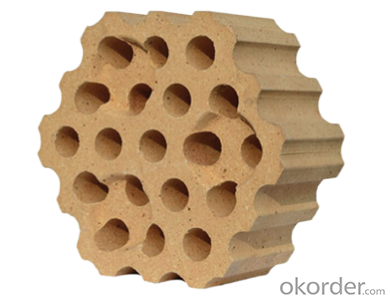
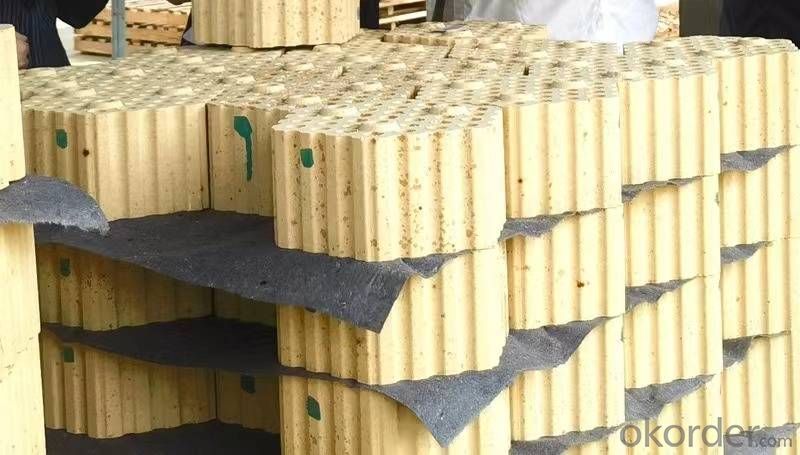
- Q:How do monolithic refractories improve the performance of iron and steel furnaces?
- Monolithic refractories, unlike traditional brick-based refractories, offer several advantages that enhance the performance of iron and steel furnaces. Firstly, their seamless design eliminates joints and seams, reducing the risk of thermal shock and leakage, leading to improved insulation and energy efficiency. Additionally, monolithic refractories have higher thermal conductivity and superior resistance to chemical attacks, ensuring longer furnace life and reduced maintenance costs. Their ability to be easily shaped and installed also allows for better lining optimization, promoting better heat transfer and uniform temperature distribution within the furnace. Ultimately, monolithic refractories contribute to increased productivity, reduced downtime, and overall improved performance of iron and steel furnaces.
- Q:How do monolithic refractories improve the quality and consistency of iron and steel products?
- Monolithic refractories play a crucial role in improving the quality and consistency of iron and steel products. These refractories are unshaped and can be easily molded and installed, providing several advantages over traditional brick refractories. Firstly, monolithic refractories offer better thermal insulation properties, ensuring effective heat management during the production process. By maintaining consistent and controlled temperatures, these refractories prevent thermal shocks and minimize thermal gradients, leading to reduced cracking and distortion in the final products. This results in improved dimensional stability and overall better quality. Furthermore, monolithic refractories have excellent resistance to thermal spalling and erosion. They can withstand high temperatures, chemical attacks, and mechanical stress, protecting the lining of the furnaces and vessels used in iron and steel production. This resistance enhances the durability and reliability of refractory linings, preventing premature failure and extending the lifespan of the equipment. Another advantage of monolithic refractories is their ability to provide a seamless lining. Unlike brick refractories, which have joints and gaps that can lead to heat loss and uneven distribution, monolithic refractories create a continuous lining with no weak points. This ensures uniform heat distribution and minimizes the risk of hotspots or cold spots, resulting in consistent and reliable iron and steel products. Monolithic refractories also offer flexibility in design and installation. They can be customized to fit various shapes and sizes, allowing for better furnace design optimization. This flexibility enables efficient use of space, improved heat transfer, and reduced energy consumption, all of which contribute to the overall quality and consistency of the final iron and steel products. In summary, monolithic refractories improve the quality and consistency of iron and steel products by providing superior thermal insulation, resistance to thermal spalling and erosion, seamless linings, and flexibility in design and installation. These refractories enhance the efficiency and reliability of the production process, resulting in higher-quality final products that meet the industry's stringent standards.
- Q:How do monolithic refractories protect the lining of ladles and tundishes?
- Monolithic refractories protect the lining of ladles and tundishes by forming a strong and durable barrier against high temperatures, chemical reactions, and mechanical stresses. These refractories are designed to be resistant to thermal shock and erosion, ensuring that the lining remains intact and unaffected by the molten metal or slag. They also provide insulation, minimizing heat loss and reducing energy consumption. Overall, monolithic refractories act as a reliable shield, extending the lifespan of the ladles and tundishes and preventing any detrimental effects on the lining.
- Q:What are the challenges in recycling monolithic refractories?
- There are several challenges in recycling monolithic refractories that make the process more complex compared to other materials. Firstly, monolithic refractories are designed to withstand high temperatures and harsh conditions, making them highly resistant to wear and tear. This durability also poses a challenge in the recycling process, as it requires specialized techniques and equipment to break down and separate the refractory material. Secondly, monolithic refractories often contain various additives and binders, such as clay, cement, and other organic compounds, which can complicate the recycling process. These additives may need to be removed or separated from the refractory material before it can be recycled effectively. Additionally, monolithic refractories can be contaminated with other materials, such as metal oxides, slag, and impurities, during their service life. These contaminants can affect the quality and properties of the recycled refractory material, requiring thorough cleaning and purification processes. Moreover, the logistics involved in collecting and transporting monolithic refractories for recycling can be challenging. Refractories are often used in large quantities in industrial settings, and their removal and transportation can be costly and time-consuming. Furthermore, finding suitable recycling facilities with the necessary equipment and expertise to handle monolithic refractories can be limited, especially in certain regions. Lastly, economic factors play a role in the challenges of recycling monolithic refractories. The cost of recycling and processing the refractories may not always be financially viable compared to using virgin materials. This can discourage companies from investing in recycling programs and contribute to the lower demand for recycled refractory materials. Overall, the challenges in recycling monolithic refractories mainly stem from their durability, complex composition, contamination, logistics, and economic considerations. However, advancements in technology and increased awareness of the environmental benefits of recycling may help overcome these challenges and promote the sustainable reuse of refractory materials.
- Q:How do monolithic refractories contribute to the reduction of emissions in iron and steel plants?
- Monolithic refractories play a crucial role in reducing emissions in iron and steel plants by providing various benefits and solutions to the environmental challenges faced by these industries. Firstly, monolithic refractories are used to line the high-temperature zones of furnaces, such as blast furnaces and electric arc furnaces, that are integral to the iron and steel production processes. These refractories have excellent thermal insulation properties, which help to minimize heat loss and improve energy efficiency. By reducing heat loss, less fuel is required to maintain the desired temperature, resulting in lower energy consumption and subsequently lower emissions. Furthermore, monolithic refractories also contribute to emissions reduction by enhancing the combustion process. They are designed to resist thermal shock and withstand extreme temperatures, ensuring that the furnaces operate at optimal conditions. This, in turn, leads to more efficient combustion of fuels and raw materials, reducing the release of harmful gases and pollutants into the atmosphere. In addition to their thermal properties, monolithic refractories also possess excellent resistance to chemical attacks and corrosion. This is particularly important in iron and steel plants, where aggressive substances such as molten metal, slag, and gases are present. By providing a protective lining, these refractories prevent the degradation of furnace walls and other equipment, reducing the risk of leaks and emissions. Moreover, monolithic refractories are often used in the construction of pollution control devices, such as flue gas desulfurization systems and baghouses. These systems are designed to capture and remove pollutants from the flue gases generated during iron and steel production. The use of refractories in these applications ensures the durability and longevity of these systems, allowing them to operate efficiently and effectively in reducing emissions. Overall, monolithic refractories contribute significantly to emissions reduction in iron and steel plants through improved energy efficiency, enhanced combustion, corrosion resistance, and support for pollution control systems. By implementing these refractories, the industry can minimize its environmental footprint and move towards more sustainable and responsible production processes.
- Q:How are monolithic refractories recycled or disposed of at the end of their lifespan?
- Monolithic refractories, widely utilized in high-temperature industrial applications, offer various means of recycling or disposal once their lifespan concludes. The preferred approach depends on the specific monolithic refractory type and its composition. Reclamation stands as a common method for recycling monolithic refractories. This process entails collecting used refractory materials and subjecting them to processing to eliminate any impurities or contaminants. The resultant reclaimed refractory material can then be crushed, ground, or milled into a fine powder suitable for utilization as a raw material in manufacturing new refractories. Thermal treatment represents an alternative means of recycling monolithic refractories. This method involves exposing the used refractory material to high temperatures within a controlled environment, such as a kiln or furnace. The heat effectively breaks down the refractory material, eliminating any binders or impurities. The resulting material can then be reused as a raw material or integrated into other applications, such as construction aggregates. When recycling is not feasible, specialized facilities designed for handling and treating hazardous waste offer a disposal avenue for monolithic refractories. These facilities ensure the proper containment and treatment of the refractory material, minimizing any potential environmental impact. This disposal method is typically reserved for refractories containing hazardous substances or those that cannot be recycled due to their composition. It is important to emphasize that the appropriate disposal or recycling method for monolithic refractories must adhere to local regulations and guidelines. These regulations aim to ensure the safe handling, treatment, and disposal of these materials, taking into account their potential environmental and health effects. Therefore, industries and businesses must collaborate closely with waste management professionals and adhere to the appropriate procedures to responsibly manage monolithic refractories at the end of their lifespan.
- Q:How do monolithic refractories contribute to the overall efficiency of ladles and tundishes?
- There are several ways in which monolithic refractories greatly improve the effectiveness of ladles and tundishes. Initially, the exceptional thermal insulation properties of monolithic refractories are well-known. By lining the ladles and tundishes with these refractories, heat loss is minimized, resulting in reduced energy consumption and improved thermal efficiency. This insulation capability also helps in maintaining a consistent temperature within the ladles and tundishes, which is vital for the proper casting and solidification of molten metal. Furthermore, monolithic refractories provide excellent resistance to thermal shocks and chemical corrosion. Ladles and tundishes are exposed to extreme temperatures and harsh chemical environments due to their contact with molten metal and various fluxes or additives. The use of monolithic refractories ensures that the ladles and tundishes have a longer lifespan by preventing cracking, spalling, or erosion caused by these harsh conditions. As a result, there is less downtime for maintenance and replacement, leading to increased overall efficiency. Moreover, the flexibility and ease of installation of monolithic refractories contribute to the efficiency of ladles and tundishes. Unlike traditional brick lining, monolithic refractories can be easily shaped and installed in different sizes and forms. This versatility allows for better customization and optimization of ladles and tundishes. This adaptability helps to improve the flow dynamics of molten metal, reducing turbulence, and enhancing the overall casting process efficiency. In conclusion, monolithic refractories significantly enhance the efficiency of ladles and tundishes through their exceptional thermal insulation properties, resistance to thermal shocks and chemical corrosion, and flexibility in installation. By reducing heat loss, extending the lifespan, and optimizing the casting process, monolithic refractories make a significant contribution to the overall efficiency and productivity of ladles and tundishes in the metal industry.
- Q:What are the key differences between acidic and basic monolithic refractories?
- The key differences between acidic and basic monolithic refractories lie in their chemical compositions and their behavior in different environments. Acidic monolithic refractories are primarily composed of acidic oxides such as silica (SiO2) or alumina (Al2O3). These materials have a high resistance to acidic environments and are commonly used in industries where they come into contact with acidic gases or liquids. Acidic refractories are characterized by their ability to withstand high temperatures and resist chemical erosion. They are generally not suitable for use in basic or alkaline conditions, as they can react with basic compounds and lose their effectiveness. On the other hand, basic monolithic refractories are composed of basic oxides such as magnesia (MgO) or dolomite (MgO-CaO). These materials have a high resistance to basic or alkaline environments and are commonly used in industries where they come into contact with basic compounds such as lime or cement. Basic refractories are characterized by their ability to withstand high temperatures and resist chemical erosion from basic compounds. They are generally not suitable for use in acidic conditions, as they can react with acidic compounds and lose their effectiveness. In terms of their physical properties, acidic monolithic refractories tend to have higher melting points and better thermal shock resistance compared to basic monolithic refractories. This is due to the higher melting points of acidic oxides and their ability to form stable silicate or aluminate structures at high temperatures. On the other hand, basic monolithic refractories generally have higher density and better resistance to penetration by molten materials. In conclusion, the key differences between acidic and basic monolithic refractories lie in their chemical compositions and their behavior in different environments. Acidic refractories are suitable for acidic conditions, have higher melting points, and better thermal shock resistance, while basic refractories are suitable for basic conditions, have higher density, and better resistance to penetration by molten materials.
- Q:In iron and steel industry, the main raw materials for blast furnace ironmaking are iron ore, coke and limestone. What's the use of limestone here?
- Calcium oxide absorbs sulfur dioxide and prevents it from polluting the air.
- Q:How are monolithic refractories installed and repaired in iron and steel plants?
- Monolithic refractories are essential components in iron and steel plants, as they provide high-temperature resistance and insulation. They are commonly used in various applications, such as lining furnaces, ladles, and other equipment that come into contact with molten metal. The installation of monolithic refractories in iron and steel plants typically involves several steps. First, the surface that will receive the refractory material must be prepared by removing any existing refractories or contaminants. This can be done through mechanical methods, such as sandblasting, or chemical cleaning processes. Next, the monolithic refractory material is mixed with water or a suitable binder to form a workable consistency. This mixture is then applied to the prepared surface using various techniques, such as gunning, casting, or troweling. Gunning involves using a high-pressure gun to spray the refractory material onto the surface, while casting involves pouring the mixture into a mold. Troweling is a manual method that involves spreading the refractory material with a trowel. Once the refractory material is applied, it needs to be properly cured or dried. This is usually achieved by allowing the material to air dry or by using controlled heating. The curing process is crucial to ensure the refractory material develops the desired properties, such as strength and resistance to thermal shock. In terms of repairs, monolithic refractories in iron and steel plants can deteriorate over time due to the harsh operating conditions. When repairs are needed, damaged or worn-out areas of the refractory lining must be identified. This can be done through visual inspection or non-destructive testing techniques. The repair process typically involves removing the damaged refractory material by chipping, drilling, or cutting. The surface is then prepared as mentioned earlier, and a new batch of monolithic refractory material is applied to restore the lining. The repair material should be compatible with the existing lining and provide similar properties to ensure the overall integrity of the refractory structure. It is important to note that the installation and repair of monolithic refractories in iron and steel plants require skilled personnel with knowledge of refractory materials and installation techniques. Additionally, proper safety measures should be followed to protect workers from potential hazards, such as exposure to high temperatures, dust, and chemicals. Regular inspection and maintenance are also crucial to identify any potential issues early on and prevent major failures that could impact production and safety.
1. Manufacturer Overview |
|
|---|---|
| Location | |
| Year Established | |
| Annual Output Value | |
| Main Markets | |
| Company Certifications | |
2. Manufacturer Certificates |
|
|---|---|
| a) Certification Name | |
| Range | |
| Reference | |
| Validity Period | |
3. Manufacturer Capability |
|
|---|---|
| a)Trade Capacity | |
| Nearest Port | |
| Export Percentage | |
| No.of Employees in Trade Department | |
| Language Spoken: | |
| b)Factory Information | |
| Factory Size: | |
| No. of Production Lines | |
| Contract Manufacturing | |
| Product Price Range | |
Send your message to us
Fireclay Brick for Blast Furnace Hot Blast Furnace Monolithic Refractory RN-40 RN-42
- Loading Port:
- China main port
- Payment Terms:
- TT or LC
- Min Order Qty:
- 24 m.t.
- Supply Capability:
- 6000 m.t./month
OKorder Service Pledge
OKorder Financial Service
Similar products
New products
Hot products
Hot Searches
Related keywords
